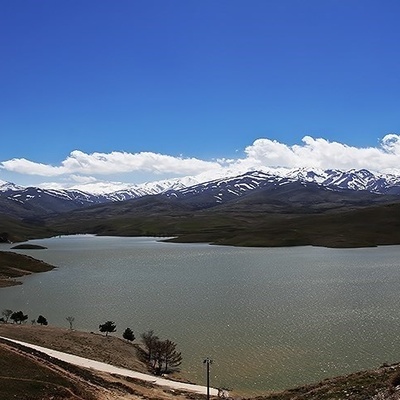Saednews: Today's destination is one of Iran's famous royal palaces, the Chehel Sotoun Palace in Isfahan; a palace that once hosted Safavid kings and became widely known for its unique decorations and exquisite paintings.

Saednews: According to the tourism service of Saadnews, Chehel Sotoun Palace, one of the key landmarks in Isfahan, is located next to Naqsh-e Jahan Square and near Chahar Bagh Avenue. This garden, along with its magnificent central pavilion, is one of the lasting memories of the Safavid era in Isfahan. After Isfahan was chosen as the capital, it was designed by Sheikh Baha'i. The palace, with its remarkable 17th-century architecture, captivates visitors. The beautiful wall paintings of Chehel Sotoun are just one of its attractions. The reflection of the twenty columns of the hall in the pool in front of the palace creates the illusion of forty columns, which is why it became famous as "Chehel Sotoun" (Forty Columns). Currently, this building serves as a museum, and its central hall showcases artworks from various periods of Iran’s history.

Why is a visit to Chehel Sotoun recommended?
Chehel Sotoun is one of the nine Iranian gardens, and it is registered as part of Iran's 23 World Heritage Sites under the name "Persian Garden."
The palace's unique architecture dazzles every visitor.
The paintings and artists featured in Chehel Sotoun contribute significantly to its fame and appeal.
This palace is considered one of the most famous and popular tourist destinations in Isfahan.

History of Chehel Sotoun Palace The construction of Chehel Sotoun dates back to the reign of Shah Abbas I, known as Abbas the Great, when Isfahan was chosen as the capital of Iran. During this time, several monumental projects were executed in the city. One of these was the construction of the grand Chahar Bagh Boulevard and the beautiful gardens surrounding it. The lush grounds of Chehel Sotoun were one of the most important of these gardens, serving as a connecting passage from Chahar Bagh to Naqsh-e Jahan Square. During the reign of Shah Abbas I, a pavilion was built in the middle of the garden to host foreign and domestic guests. This pavilion was the first foundation of the palace, and some historical texts mention that Shah Abbas I celebrated Nowruz in 1614 there. When Shah Abbas II ascended the throne in the mid-17th century, this simple pavilion was expanded, adding several halls, including the 18-column hall, the Mirror Hall, and luxurious rooms on the upper floor. The new structure was decorated with various Persian ornamental arts, including mirror work, miniatures, tile work, and muqarnas, and it was known as the most blessed building in the world. A beautiful pool was constructed in front of the building, enhancing its beauty. The construction of Chehel Sotoun was completed in 1647 and was inaugurated with the presence of foreign and domestic guests and the king. It then served as a reception hall for diplomats and foreign officials. According to some historians, the building was destroyed in a severe fire, and parts of it were burned during the later years of the Safavid era.

Architecture of Chehel Sotoun Palace The palace and its gardens cover an area of about 67,000 square meters. The architecture of the palace is a blend of Chinese, Persian, and French styles. The front porch of the palace has 20 columns. It is believed that it is known as "Chehel Sotoun" because of its reflection in the water of the front pool. Another theory suggests that the name refers to the numerous columns in the palace. In Persian literature, forty is often used to indicate abundance. Upon visiting the palace, the first feature that catches your attention is the large porch, which is 38 meters long and 17 meters wide. This porch is on the eastern side of the building and has 18 wooden columns, each 14 meters high, made from the trunks of plane trees and pines. At the top of each column, intricate decorations are skillfully applied. There are also four central columns supported by beautifully carved stone lions, which are fountains that pour water into a marble pool between the four columns. The roof of the porch is made of wood and is decorated with painting and mirror work. The main hall, or the Throne Hall, is the most important part of Chehel Sotoun Palace. It is decorated with stunning Safavid-era paintings, inlaid windows, and an exquisite ceiling.

The ceiling of this large room may be the best example of its kind in Iran. The paintings are exemplary of the Isfahan school of painting from the 17th and 18th centuries. Overall, besides the floral and animal decorations on the walls, around seventy wall paintings using tempera and oil painting techniques can be seen. The original wall paintings date back to the time of Shah Abbas II and mostly reflect the characteristics of the Isfahan school.
Cost and Suggested Visit Duration To enter this beautiful site, you need to purchase an entry ticket. The palace is open every day from 9:30 AM to 3:45 PM. The suggested time for visiting this historic site is 1 to 2 hours.
How to Reach Chehel Sotoun You can reach Chehel Sotoun by private car or public transportation, such as the Isfahan Metro. The Imam Hussein Square Metro station and bus station are located near the palace. If you are interested in learning more about getting around and visiting other tourist attractions in Isfahan, a travel guide to Isfahan might be very helpful for you.

Best Time to Visit Isfahan The best time to visit the palace is in the spring, especially in May. However, due to the cool evenings in the summer, it is also a popular destination. At night, Chehel Sotoun takes on a special charm with its beautiful lighting.
Nearby Tourist Attractions
Isfahan Museum of Contemporary Art: 350 meters
Isfahan Natural History Museum: 350 meters
Ali Qapu Palace: 600 meters
Naqsh-e Jahan Square: 700 meters
Khaju Bridge: 3.4 kilometers
Vank Cathedral: 4.3 kilometers


